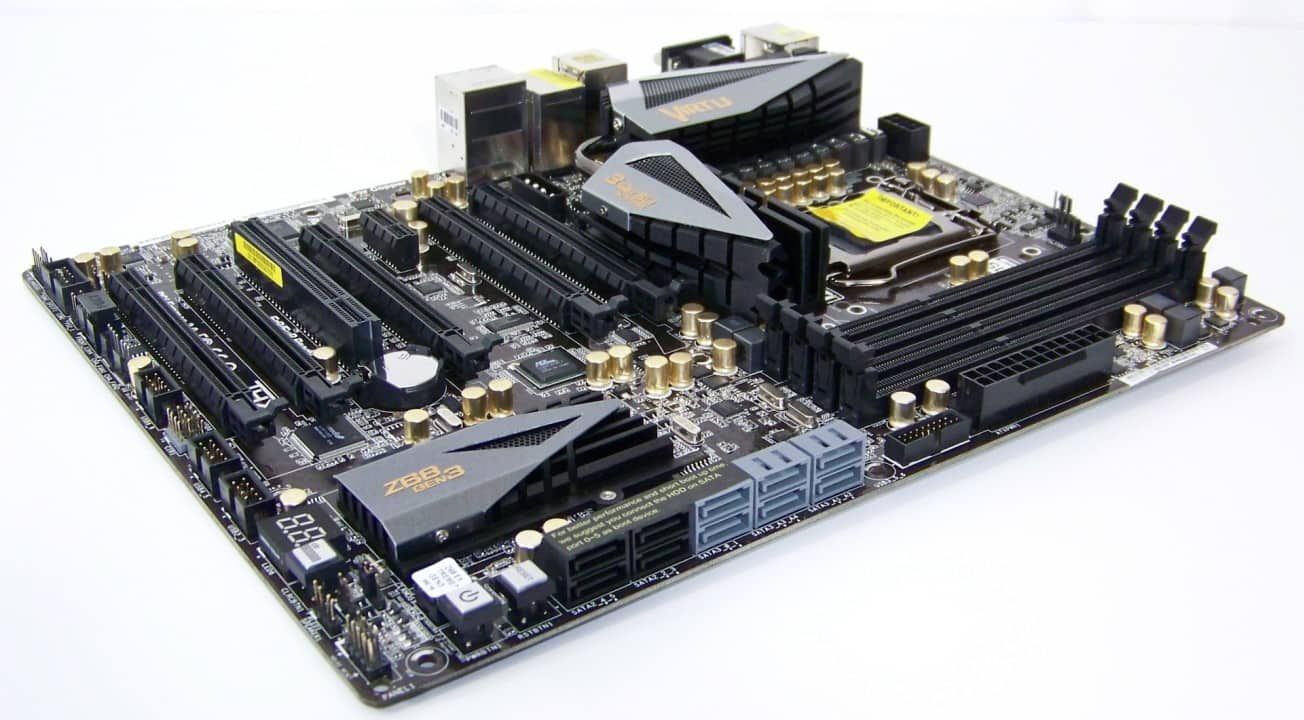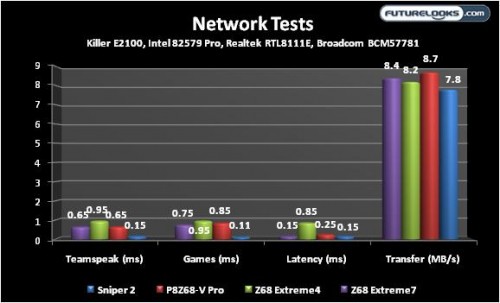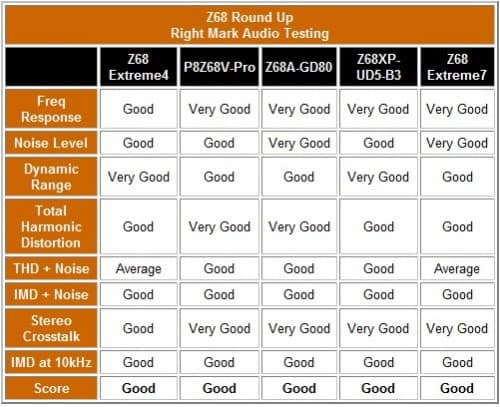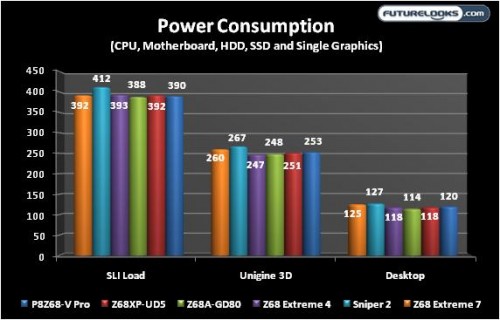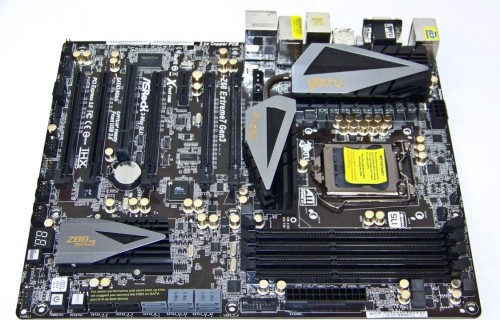Network Comparison
Before GIGABYTE’s G1.Killer series came along, the two common integrated network processors were Intel Pro and Realtek. Now, we have the Killer E2100 and Broadcom which ASRock has chosen to use on their latest flagship boards. This comparison test only used four Z68 boards to test those network features.
Transfer rates are decent compared to the Sniper 2 (E2100) which is tuned for game traffic more than net traffic. The latency is as low as but not when it comes to the average individual game’s communications. The E2100 fully off loaded the Windows stack and uses the Killer Network Manager which helps in that respect. It’s also got hardware to help it along. ASRock’s XFast LAN doesn’t quite achieve the same offload but does let you prioritize which programs you want hogging up all the bandwidth.
RightMarkAudio Analyzer
The objective here is to compare the motherboards’ audio performance a bit more objectively than with the human ear. Breaking down audio performance requires a high quality set of head phones, good quality male-to-male analog cable, and RMAA. We actually test 24-bit 48, 96, and 192Hz frequencies.
What can I say? Realtek is a commonly used “cost effective” integrated audio processor. These codecs can do more than they let on but that requires licensing and software which means more cost to the consumer. Audio performance is right on par with many other Z68s we’ve tested. If you need higher end audio, the Sniper 2 will always take this crown since it’s more than software that makes that board special in terms of audio performance.
Power Consumption
A power socket meter was used during testing to compare power consumption. This was spread out over a couple days in order to get a good overall average.
The more feature rich Extreme 7 and Sniper 2 motherboards consume more power than the rest. The P8Z68V-Pro continues to be a testament to its digital PWM technology even with its more aggressive transient response. In other words, it’s quite efficient even when overclocked.
Final Thoughts
Enthusiasts are often gun shy to jump on ASRock’s ship mainly because their history isn’t built around the enthusiast community in the conventional way. Their goal in the past has been to offer well balanced, affordable performance which they have mostly achieved, but at the expense of some quality control issues early on. ASRock has made a push in the last two years to improve their designs, quality and performance in hopes of becoming a more attractive motherboard provider. Finding that balance has been no small feat.
The ASRock Z68 Extreme 7 really is a great board. I’m happy to see their engineers give this impressive looking platform a back bone that is worthy of its bladed facade. Stock performance and stability were quite good. The quality of board definitely lends a hand in that respect. Overclocking, while not the most important selling feature, is more aggressive and easily accepts 4.8GHz standard operations which is a good bonus that true hardcore enthusiasts should consider. Ultimately, the 3-way NVIDIA SLI and AMD CrossfireX PCI Express expansion, aggressive performance and stability along with its overall presentation are top notch.
In terms of bang for buck value, the Extreme 7 is one of very few 3-way PCIE motherboards available on the market starting at about $269.99 US/CA, which is well below the competition. Most of the competition pricing starts off above the $300 range including the only truly comparable motherboard in our labs, the GIGABYTE G1.Killer Sniper 2 which costs about $360US. At $269.99 US/CA, the Extreme 7’s performance, expansion and quality are well worth the price. It’s definitely a great value and hard not to recommend at the price it comes in at.
Pros
- Great 2-tone bladed heatsinks and gold on black theme
- Aggressive stock performance
- PLX full speed PCI Express performance and IO
- All the onboard buttons, bells and whistles you’ll ever need
- Good quality components overall
- Decent overclocking
- Represents great value at $269.99
Cons
- Overclocking performance slightly below competitors
- Long term durability still under scrutiny
Overall Rating: 9.0 / 10.0


Help Us Improve Our Reviews By Leaving a Comment Below

